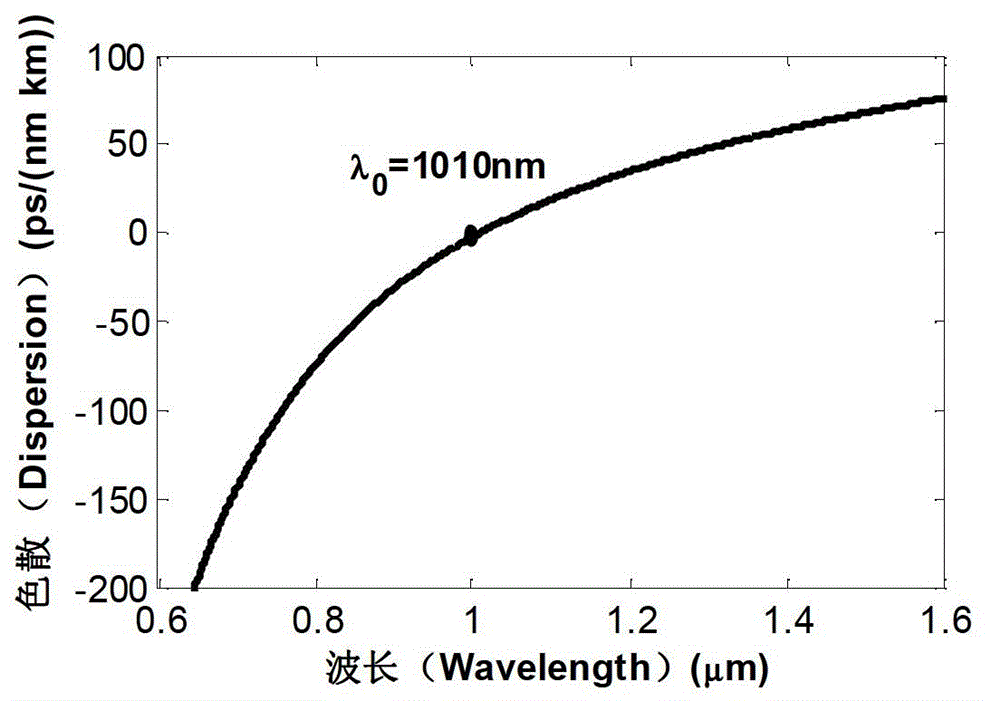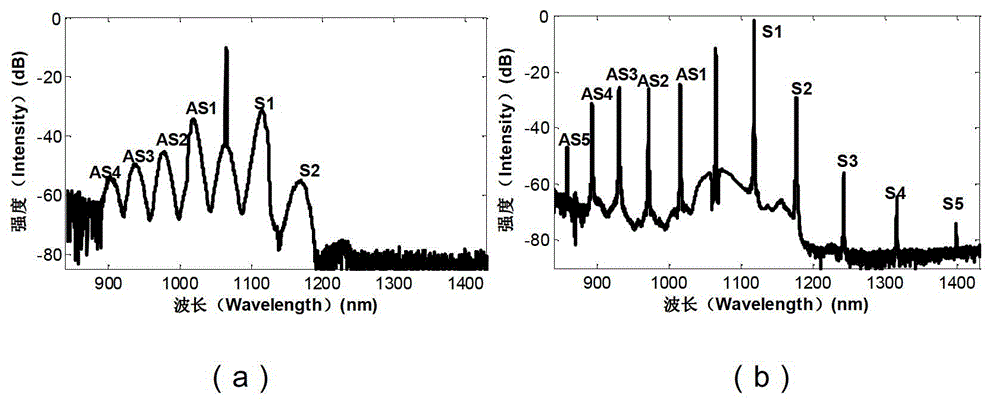Anti-Strokes Raman fiber laser achieving multi-wavelength output
A fiber laser and multi-wavelength technology, applied in the direction of laser scattering effect, the structure/shape of the active medium, etc., can solve the problems of non-adjustable wavelength, no short laser Raman fiber laser, etc., and achieve the effect that the phase matching condition is easy to meet
- Summary
- Abstract
- Description
- Claims
- Application Information
AI Technical Summary
Problems solved by technology
Method used
Image
Examples
Embodiment Construction
[0029] figure 1 It is a structural representation of the present invention. The invention consists of a pulse light source 1, a continuous light source 2, a wavelength division multiplexer WDM3, a high reflection grating 4, an optical fiber 6, a low reflection grating 5 and a filter 7. Wherein the pulse light source 1 and the continuous light source 2 are connected to the two input arms of the wavelength division multiplexer 3 through a single-mode fiber, and the output arm of the wavelength division multiplexer 3 is connected to the high reflection grating 4 through a single mode fiber, and the high reflection grating 4 It is connected to the optical fiber 6, the other end of the optical fiber 6 is connected to the low reflection grating 5 through a single-mode fiber, and the output end of the low reflection grating 5 is connected to the filter 7 through a single-mode fiber.
[0030] National Defense University Press figure 1A multi-wavelength output anti-Stokes Raman fiber...
PUM
 Login to View More
Login to View More Abstract
Description
Claims
Application Information
 Login to View More
Login to View More - R&D
- Intellectual Property
- Life Sciences
- Materials
- Tech Scout
- Unparalleled Data Quality
- Higher Quality Content
- 60% Fewer Hallucinations
Browse by: Latest US Patents, China's latest patents, Technical Efficacy Thesaurus, Application Domain, Technology Topic, Popular Technical Reports.
© 2025 PatSnap. All rights reserved.Legal|Privacy policy|Modern Slavery Act Transparency Statement|Sitemap|About US| Contact US: help@patsnap.com



